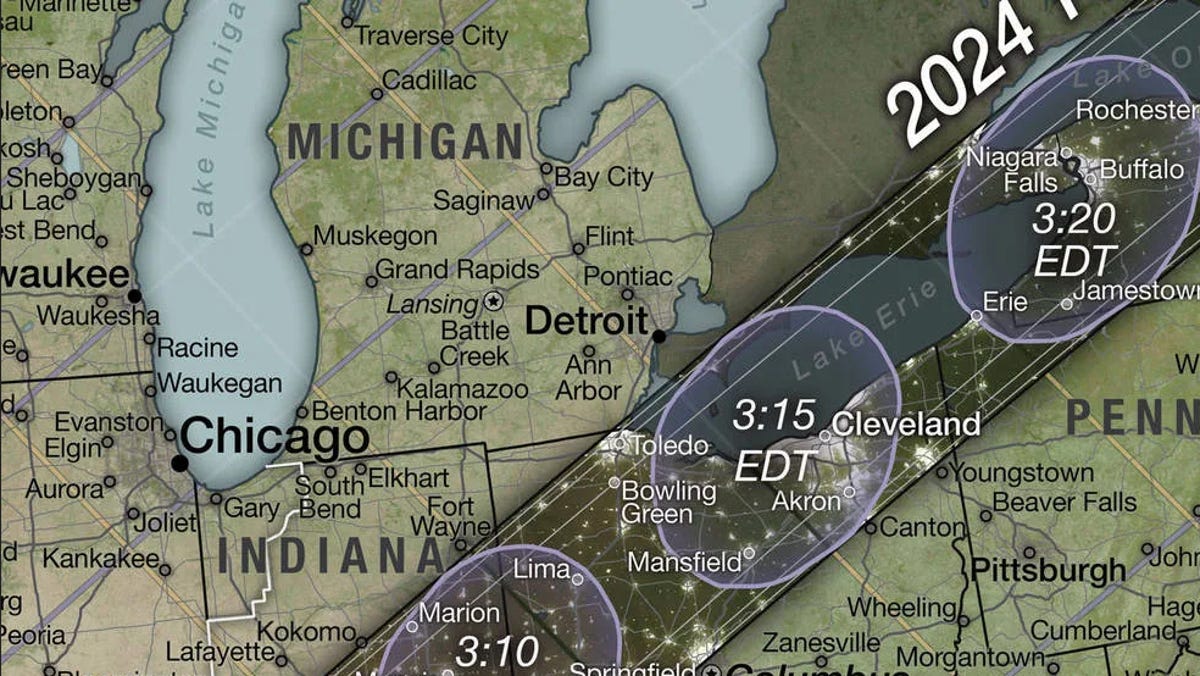Solar Eclipse 2024: NWS climate data predicts Midwestern cloud cover for April 8
April 8 is almost here, but the National Weather Service says that Mother Nature might not play along for Ohio's big solar eclipse moment. On April 8, the moon will pass over Ohio, marking the first time in 200 years that the state has seen a total solar eclipse since 1806. The last time a total eclipse occurred in Ohio was in 1806, three years after Ohio became statehood. However, the weather is one of the factors that will determine the outcome of the eclipse. Preparations have already begun, with schools closed and state parks preparing for the day of darkness. The National Weather Service has predicted that the average rainfall for April 8 will be 0.15 inches, making it mildly wet. Cleveland, Indianapolis, and Toledo are expected to be largely dry, with temperatures likely to exceed 0.00 inches.

Published : 4 weeks ago by , The Columbus Dispatch in Weather
Here comes the sun.
Well, the sun comes every day. But on April 8, the sun's celestial buddy, the moon, will be positioned directly between the Earth and its big star, completely blocking out its rays in Ohio for the first time in 200 years.
The last time a total solar eclipse passed over the Buckeye state, it was 1806, just three years after Ohio achieved statehood. Sixteenth president Abraham Lincoln wasn't even born yet.
The next time you'll get a chance to see a total eclipse in Ohio is 2099, so you may want to make the most of this one.
Preparations for the day of darkness have already begun; schools are closed, state parks are ready to hand out eclipse glasses and northern counties are urging people to stay home.
More: April 8 solar eclipse won't bring human sacrifice, but is there reason to worry?
But there is one factor that's beyond the control of any person or government agency: the weather. Here's what it'll be like on April 8, according to the National Weather Service.
When is the total solar eclipse?
The sky will start darkening at 1:55 p.m. on April 8, while the totality will start around 3:10 p.m. Columbus itself isn't in the path of the eclipse's totality; you'll have to go north to Dublin, Worthington or Westerville to see the entire sun disappear.
It might be a gray day.
Historically, Columbus averaged 60 to 70% cloud cover on April 8. Also, 45% of hourly observations taken at 3 p.m. during the month of April are overcast.
The average rainfall for April 8 is 0.15 inches, so it could be mildly wet. Fifty-six past April 8's had no rainfall, 21 days had trace amounts of precipitation and 41 days had .01 to .24 inches of rain.
We likely won't be seeing any snow; the average snowfall for April 8 is 0.00 inches.
Here are a few projects for major cities in the path of the eclipse:
It might be grayer up north.
On past dates, Cleveland averaged 60-80% cloud cover. Also, past days were overcast 61% of the time.
It's a bit of a toss-up if it'll rain or not. 53% of days had no rain while 47% did.
Unfortunately, a sunny, clear day is unlikely for Toledo.
On past dates, Toledo averaged 70-80% cloud cover. But a clear day isn't impossible; 34% of dates in the past were free of clouds.
It'll probably be dry, too. 56% of past dates had no weather, while only 16% had rain. The most likely weather event is mist, which appeared on 20% of past days.
It might not be any clearer for our neighbors in Indiana.
Indianapolis, which sits right in the middle of the eclipse's path of totality, averages 70-80% cloud cover on April 8.
At least history points to dry conditions; 57 past dates had no rain, while 30 had trace amounts of rain. As for snow, 112 past dates saw no snowfall, making a shot at a snow angel on April 8 unlikely.
How can I see the eclipse?
Look up, but not without special eclipse glasses. Gazing at the eclipse with your eyes, a telescope, a camera or binoculars without protection will "instantly cause severe eye injury," according to NASA.
